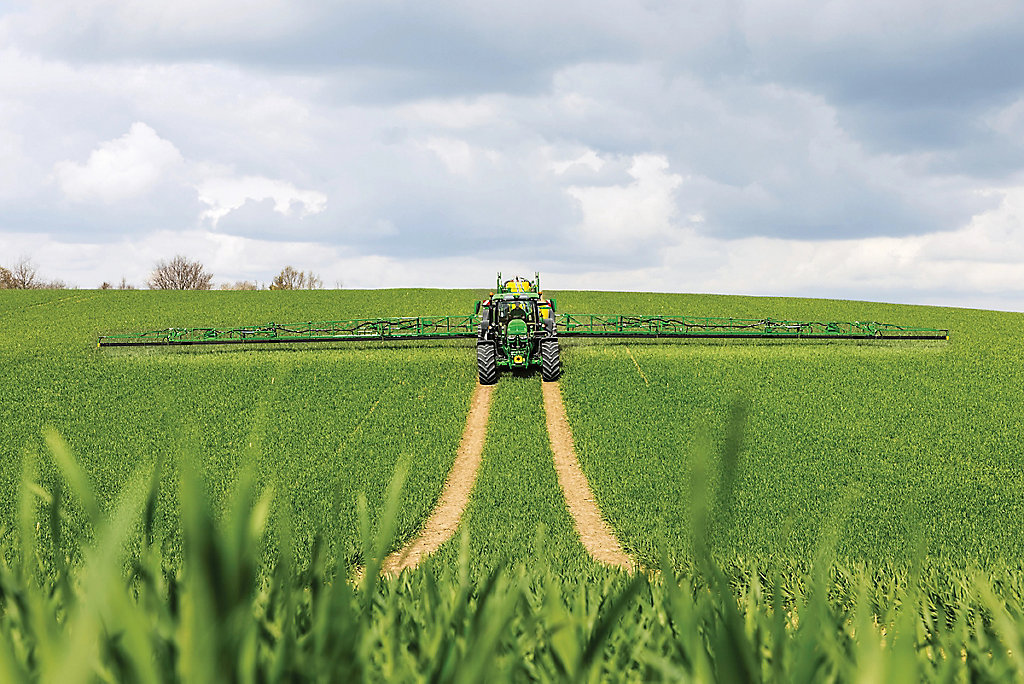Cereal growers will need to use the best tools available to them to offset the threat of septoria this year, Corteva Agriscience has advised.
After the warmest February on record for England and Wales, followed by a very wet March, early indications in the field are pointing towards a high septoria pressure year.
Those who managed to plant wheat last autumn will be concerned about the amount of rain that has fallen and, as temperatures rise this spring, there are still no signs of the showers stopping any time soon.
Corteva’s Cereal Fungicide Category Manager Mike Ashworth said: “The conditions look likely to create a perfect storm; septoria lesions are already being spotted in fields, even on varieties with proven high resistance, such as Extase.
“It’s been a difficult few months for arable farmers, and the last thing we want is for septoria and rusts to compound what has already been a very tough season.
“Spring fieldwork is mounting and growers are desperately hoping for a window to catch up, so a strategy for 2024 fungicide programmes which reflects the disease pressure seen in the fields will need to be developed imminently.
“The best course of action is getting a proven, reliable fungicide in store, so you’re ready to go as soon as the rain stops.”
For the past three years, independent AHDB trials have shown that Corteva’s Univoq™ fungicide is the most effective product for the control of septoria in wheat.
Containing Inatreq™ active with prothioconazole, and strengthened by Corteva’s patented i-Q4™ formulation, Univoq has provided the best curative activity against wheat’s most damaging disease, putting it ahead of other broad-spectrum fungicides.
Univoq is also effective against rusts, which are likely to be prevalent in later-drilled crops this year.
To help tackle the season’s challenges, Corteva’s experts advise growers use fungicide chemistry with both protectant and curative qualities.
Corteva’s Field Technical Manager, Craig Chisholm, said: “Univoq has proven its ability to deliver curative and preventative persistence against yield-robbing diseases. In 2021 we had a very wet spring and were facing similar circumstances to what we see in front of us today, and the fungicide did an excellent job in protecting crops during that season.”
Predominantly used at the T2 timing – growth stage 39 – to elicit the greatest possible yield response, Univoq helps contain latent disease and protect the crop for the following four-to-six weeks.
A standard application of Univoq at the T2 timing is 1.25l/ha, but rates can be adjusted up to 1.5l/ha or down to 1.1l/ha depending on variety and disease prevalence. The 1.5L/ha rate should be targeted where disease pressure is already high, the T1 to T2 gap may have become extended (for curative effect) and where greater persistency of control is required because of ongoing rainfall causing frequent infection events. Trials in 2021 indicated that under these circumstances increasing the rate from 1.25L/ha to 1.5L/ha gave a 0.15T/ha yield benefit worth £30/ha when wheat is £200/tonne.
Corteva has urged growers to follow its best practice application advice when applying products containing the Inatreq active.

Useful information
Corteva technical hotline:
Tel: 0800 689 8899
E-mail: ukhotline@corteva.com
Media Contact: Ben Pike
ben@evecommunications.co.uk
Tel: 01327 438617 / 07832168560